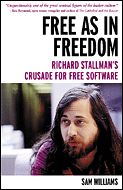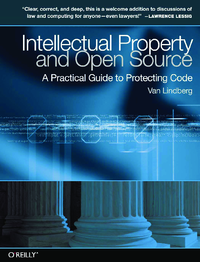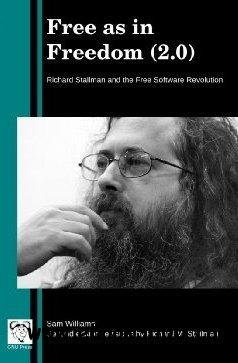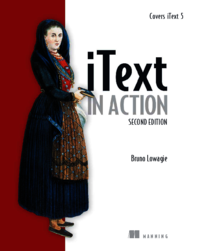Etiqueta "GPL"
Se han encontrado 4 Coincidencias
Free as in Freedom. Richard Stallman's Crusade for Free Software
69 Visitas | 156 Descargas | 2013-10-03 03:41:39 | rmartinez
The work of Richard M. Stallman literally speaks for itself. From the documented source code to the published papers to the recorded speeches, few people have expressed as much willingness to lay their thoughts and their work on the line. Such openness ---if one can pardon a momentary un-Stallman adjective--- is refreshing. After all, we live in a society that treats information, especially personal information, as a valuable commodity. The question quickly arises. Why would anybody want to part with so much information and yet appear to demand nothing in return? As we shall see in later chapters, Stallman does not part with his words or his work altruistically. Every program, speech, and on-the-record bon mot comes with a price, albeit not the kind of price most people are used to paying.

Intellectual Property and Open Source
65 Visitas | 140 Descargas | 2013-10-03 03:53:30 | rmartinez
This book is about a tool that we use called intellectual property—IP for short. We use IP to allocate value and create incentives in society. Just like many other powerful tools, IP can be very useful, but it can also be difficult to work with. You can (easily!) shoot yourself in the foot with intellectual property if you don’t understand how and why this tool works. This book is divided into two parts. The first part, comprising Chapter 1–Chapter 8, is an introduction to intellectual property law. The second part, comprising Chapter 9–Chapter 14, is more of an intellectual property handbook for developers, particularly those working in the open source space. It is also applicable to those working commercially, but more often than not your experience with intellectual property will be constrained by your employer’s IP policies. The quick outline is as follows:

Free as in Freedom (2.0): Richard Stallman and the Free Software Revolution
63 Visitas | 240 Descargas | 2013-10-03 04:29:21 | rmartinez
In 2002, Sam Williams wrote Free as in Freedom, a biography of Richard M. Stallman. In its epilogue, Williams expressed hope that choosing to distribute his book under the GNU Free Documentation License would enable and encourage others to share corrections and their own perspectives through modifications to his work. Free as in Freedom (2.0) is Stallman's revision of the original biography. While preserving Williams's viewpoint, it includes factual corrections and extensive new commentary by Stallman, as well as new prefaces by both authors written for the occasion. It is a rare kind of biography, where the reader has the benefit of both the biographer's original words and the subject's response

iText in Action. Second Edition.
Manejo de PDF en Java.
65 Visitas | 120 Descargas | 2013-11-14 18:44:59 | rmartinez
This book will teach you about PDF, Adobe’s Portable Document Format, from a Java developer’s point of view. You’ll learn how to use iText in a Java/J2EE application to produce and manipulate PDF documents. Along the way, you’ll become acquainted with interesting PDF features and discover e-document functionality you may not have known about before. Today, iText is the world’s leading F/OSS PDF library. It’s released under the Affero General Public License (AGPL) and is available in two versions: the original Java version, and the C# port, iTextSharp. These libraries make it possible for you to enhance applications with dynamic PDF solutions.
Contribuir
Usted puede contribuir con Libros UCLV, es importante para nosotros su aporte..
Contribuir